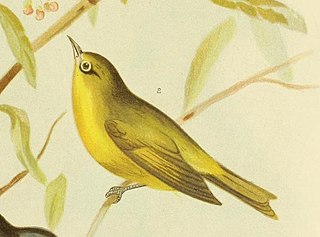Keyesville is an unincorporated community in Kern County, California. It is located 2 miles (3.2 km) west of Lake Isabella and the Kern River Valley, at an elevation of 2,848 feet (868 m). Keyesville, founded in 1854 is named for Richard M. Keyes, whose discovery of gold in 1853 started the Kern River Gold Rush. The Keyesville Townsite has been privately owned since the late 1800's and is currently encircled by BLM land Bureau of Land Management.

Suillus luteus is a bolete fungus, and the type species of the genus Suillus. A common fungus native all across Eurasia from Ireland to Korea, it has been introduced widely elsewhere, including North and South America, southern Africa, Australia and New Zealand. Commonly referred to as slippery jack or sticky bun in English-speaking countries, its names refer to the brown cap, which is characteristically slimy in wet conditions. The fungus, initially described as Boletus luteus by Carl Linnaeus in 1753, is now classified in a different fungus family as well as genus. Suillus luteus is edible, though not as highly regarded as other bolete mushrooms. It is commonly prepared and eaten in soups, stews or fried dishes. The slime coating, however, may cause indigestion if not removed before eating. It is often sold as a dried mushroom.

Gymnopilus junonius is a type of mushroom-forming fungus in the family Hymenogastraceae. Commonly known as the spectacular rustgill, this large orange mushroom is typically found growing on tree stumps, logs, or tree bases. Some subspecies of this mushroom contain the neurotoxic oligoisoprenoid gymnopilin.
The Spenceville Wildlife Area is an 11,448-acre (46.33 km2) wildlife preserve managed by the California Department of Fish and Wildlife. It is located in the Sierra Nevada Foothills, within Nevada County and Yuba County of northern California.

Zapus is a genus of North American jumping mouse. It is the only genus whose members have the dental formula 1.0.1.31.0.0.3. Zapus are the only extant mammals aside from the Aye-aye with a total of 18 teeth.

The canary white-eye or yellow white-eye is a species of white-eye endemic to northern Australia in subtropical or tropical mangrove forests. Its common name reflects the circle of white feathers around its eye.

Potamanthus is the type genus of the family Potamanthidae, sometimes called "hackle-gilled burrower mayflies". Species of Potamanthushave been recorded from the Palaearctic Nearctic and Oriental realms.

Potamanthus luteus is a species of hacklegilled burrower mayfly in the family Potamanthidae. It is or was found principally on the Rivers Usk and Wye in the UK; in the Usk it may have become extinct and in the Wye it has suffered a population crash.
Saropogon hypomelas is a species of robber flies.

Saropogon is a genus of robber flies. There are at least 120 described species in Saropogon.
Saropogon bryanti is a species of robber flies.
Saropogon nitidus is a species of robber flies.
Saropogon dispar is a species of robber flies.
Saropogon mohawki is a species of robber flies.

Saropogon pritchardi is a species of robber flies.
Saropogon purus is a species of robber flies.
Lutrochus luteus is a species of travertine beetle in the family Lutrochidae. It is found in North America.
Saropogon abbreviatus is a species of robber flies.
Callistoctopus luteus, the starry night octopus, is a species of octopus within the family Octopodidae. The species is found distributed in the Western Pacific near areas such as the Gulf of Thailand, Taiwan, Vietnam, the Philippines, Indonesia, Japan, Timor, and Hawaii, with the type locality coming from the Pescadore Islands of Taiwan. Habitats include sandy seafloors, seaweed, and rubble areas to forage for prey at depths up to 82 meters. The species is reddish brown in color with several white spots, with a max length of 70 cm, and a mantle length of 12.5 cm.








